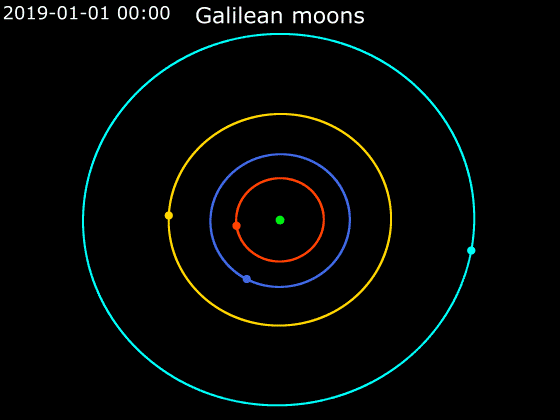|
Cosmopterix Callisto
''Cosmopterix callisto'' is a moth of the family Cosmopterigidae. It is known from Peru. Description Female. Forewing length 3.9 mm. Head: frons shining ochreous-white, vertex, neck tufts and collar shining dark brown with reddish gloss and some bluish and greenish reflections, lined white laterally; labial palpus first segment very short, ochreous-white, second segment three-quarters of the length of third, dark brown with white longitudinal lines laterally, third segment white, lined dark brown laterally; scape dorsally shining dark brown with a white anterior line, ventrally shining ochreous-white, antenna shining dark brown with a white anterior line from base to beyond one half, distal part interrupted, followed towards apex by one white segment, one dark brown, a white section of approximately eight segments, apical part dark brown and slightly serrate. Thorax and tegulae shining dark brown with reddish gloss and greenish reflection. Legs: shining dark brown, femora ... [...More Info...] [...Related Items...] OR: [Wikipedia] [Google] [Baidu] |
Moth
Moths are a paraphyletic group of insects that includes all members of the order Lepidoptera that are not butterflies, with moths making up the vast majority of the order. There are thought to be approximately 160,000 species of moth, many of which have yet to be described. Most species of moth are nocturnal, but there are also crepuscular and diurnal species. Differences between butterflies and moths While the butterflies form a monophyletic group, the moths, comprising the rest of the Lepidoptera, do not. Many attempts have been made to group the superfamilies of the Lepidoptera into natural groups, most of which fail because one of the two groups is not monophyletic: Microlepidoptera and Macrolepidoptera, Heterocera and Rhopalocera, Jugatae and Frenatae, Monotrysia and Ditrysia.Scoble, MJ 1995. The Lepidoptera: Form, function and diversity. Oxford, UK: Oxford University Press; 404 p. Although the rules for distinguishing moths from butterflies are not well establishe ... [...More Info...] [...Related Items...] OR: [Wikipedia] [Google] [Baidu] |
Cosmopterigidae
The Cosmopterigidae are a family of insects (cosmet moths) in the order Lepidoptera. These are small moths with narrow wings whose tiny larvae feed internally on the leaves, seeds and stems of their host plants. About 1500 species are described. The taxonomic family is most diverse in the Australian and Pacific region with about 780 species. Several genera formerly included here have been moved to the Agonoxeninae. Taxonomy The family consists of four subfamilies and these genera: *Subfamily Antequerinae Hodges, 1978 *Subfamily Chrysopeleiinae Mosher, 1916 *Subfamily Cosmopteriginae Heinemann & Wocke, 1876 **'' Adeana'' **''Allotalanta'' **'' Anatrachyntis'' **'' Anoncia'' **'' Aphanosara'' **'' Archisopha'' **'' Ashibusa'' **'' Axiarcha'' **'' Clemmatista'' **''Coccidiphila'' **''Cosmopterix'' **'' Diatonica'' **'' Diversivalva'' **'' Dorodoca'' **'' Dromiaulis'' **''Ecballogonia'' **''Echinoscelis'' **''Endograptis'' **''Eralea'' **''Eteobalea'' **'' Hodgesiell ... [...More Info...] [...Related Items...] OR: [Wikipedia] [Google] [Baidu] |
Peru
, image_flag = Flag of Peru.svg , image_coat = Escudo nacional del Perú.svg , other_symbol = Great Seal of the State , other_symbol_type = Seal (emblem), National seal , national_motto = "Firm and Happy for the Union" , national_anthem = "National Anthem of Peru" , march = "March of Flags" , image_map = PER orthographic.svg , map_caption = , image_map2 = , capital = Lima , coordinates = , largest_city = capital , official_languages = Peruvian Spanish, Spanish , languages_type = Co-official languages , languages = , ethnic_groups = , ethnic_groups_year = 2017 , demonym = Peruvians, Peruvian , government_type = Unitary state, Unitary Semi-presidential system, semi-presidential republic , leader_title1 = President of Peru, President ... [...More Info...] [...Related Items...] OR: [Wikipedia] [Google] [Baidu] |
Callisto (moon)
Callisto (), or Jupiter IV, is the second-largest moon of Jupiter, after Ganymede. It is the third-largest moon in the Solar System after Ganymede and Saturn's largest moon Titan, and the largest object in the Solar System that may not be properly differentiated. Callisto was discovered in 1610 by Galileo Galilei. With a diameter of , Callisto is about 99% the diameter of the planet Mercury, but only about a third of its mass. It is the fourth Galilean moon of Jupiter by distance, with an orbital radius of about . It is not in an orbital resonance like the three other Galilean satellites— Io, Europa, and Ganymede—and is thus not appreciably tidally heated. Callisto's rotation is tidally locked to its orbit around Jupiter, so that the same hemisphere always faces inward. Because of this, there is a sub-Jovian point on Callisto's surface, from which Jupiter would appear to hang directly overhead. It is less affected by Jupiter's magnetosphere than the other inner satell ... [...More Info...] [...Related Items...] OR: [Wikipedia] [Google] [Baidu] |
Jupiter
Jupiter is the fifth planet from the Sun and the List of Solar System objects by size, largest in the Solar System. It is a gas giant with a mass more than two and a half times that of all the other planets in the Solar System combined, but slightly less than one-thousandth the mass of the Sun. Jupiter is the List of brightest natural objects in the sky, third brightest natural object in the Earth's night sky after the Moon and Venus, and it has been observed since Pre-history, prehistoric times. It was named after the Jupiter (mythology), Roman god Jupiter, the king of the gods. Jupiter is primarily composed of hydrogen, but helium constitutes one-quarter of its mass and one-tenth of its volume. It probably has a rocky core of heavier elements, but, like the other giant planets in the Solar System, it lacks a well-defined solid surface. The ongoing contraction of Jupiter's interior generates more heat than it receives from the Sun. Because of its rapid rotation, the planet' ... [...More Info...] [...Related Items...] OR: [Wikipedia] [Google] [Baidu] |

